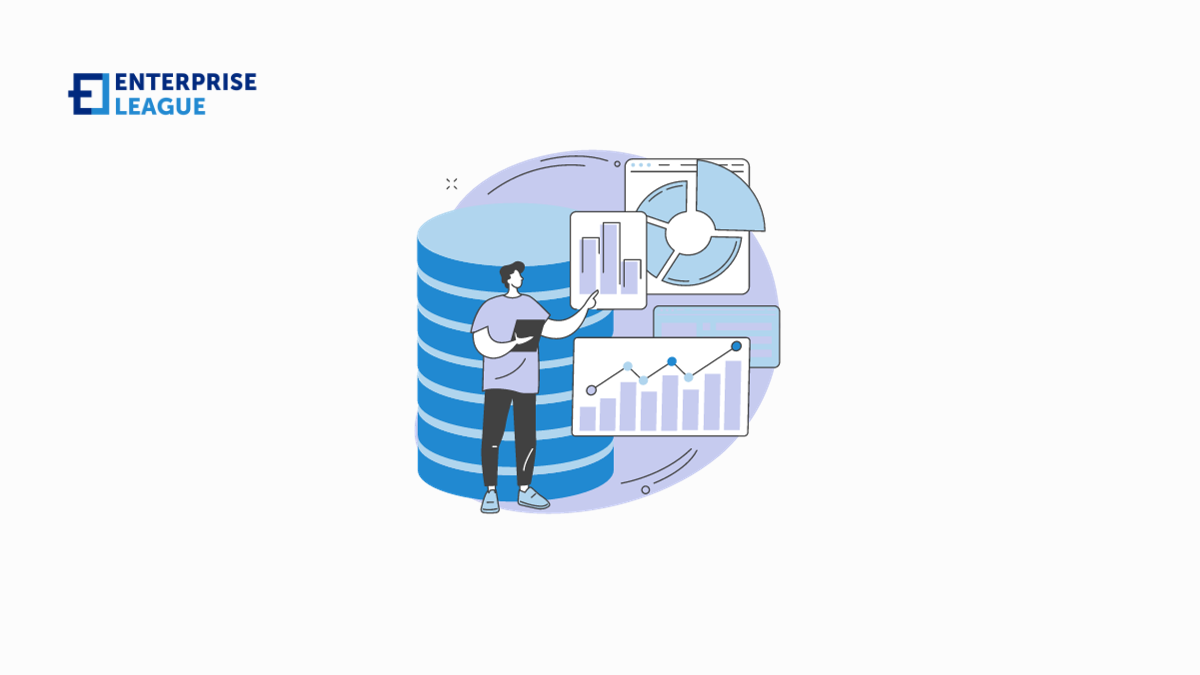Big data analytics: Transforming marketing strategies in the digital age
December 21, 2023

The role of big data analytics in marketing
Furthermore, big data analytics provides a profound understanding of customer interactions with products or services, offering invaluable insights for enhancing the overall customer experience. This wealth of information can be harnessed to refine strategies, address pain points, and tailor offerings to meet customer expectations more effectively.
If you’re in search of reliable big data development services, consider exploring CHI Software’s expertise in this field. They provide a comprehensive suite of services dedicated to big data development, ensuring businesses can leverage the full potential of their data resources. To delve deeper into the offerings and capabilities of CHI Software in big data development, you can visit their website.
Leveraging customer insights for targeted campaigns
Customer insights are a crucial component of marketing, as they provide a deeper understanding of your audience and their needs.
Customer insights differ from customer data because they’re not just about knowing what customers have bought in the past, but also understanding their wants and desires. This allows you to create products, services, and experiences that meet those needs–and in turn create loyal customers who will stay with you for years to come.
Personalization and customization in marketing
Personalization and customization are two different concepts in marketing. Personalization refers to tailoring marketing strategies based on an individual’s preferences, needs, or demographics. For instance, if you browse a website and see advertisements for products you recently searched for on Amazon or viewed videos about on YouTube, that’s an example of personalization. The site recognizes your interests and uses them to shape their messaging.
Personalization helps marketers deliver content that directly appeals to consumers according to their unique interests. It also reduces wasted effort when trying to reach people who are not interested. However, due to the inherent variability between individuals in their tastes, interests, and needs, even identical messaging may not work similarly across all users. It’s imperative, especially for businesses like ours, operating online, to ensure that we remain constantly adaptable to changing consumer interests and preferences.
Analyzing trends and predicting consumer behavior
The first step in doing this is understanding their needs and wants–what drives their decision-making process? How do these differ from one person or group of people (e.g., age group) compared with another? What makes one group more likely than another group of consumers who have similar profiles when it comes down to buying decisions? These are all questions that need answering before any accurate predictions can be made about future purchase behaviors based on historical data analysis.
Improving campaign effectiveness through data-driven decisions
There are a number of ways in which you can use data to improve campaign effectiveness. Here are a few more ways to improve campaign effectiveness through data-driven decisions:
- Personalize your messaging: Utilize data to personalize your communication and make it more relevant to your audience. By analyzing customer demographics, preferences, and behavior, you can create targeted messages that resonate with each segment of your audience. Personalization increases engagement and conversion rates.
- Optimize your timing: Analyze data to determine the optimal timing for delivering your campaign messages. Consider factors such as the time of day, day of the week, and even seasonality. By understanding when your audience is most likely to be receptive, you can maximize the impact of your campaigns.
- Monitor and analyze campaign performance: Use analytics tools to measure the performance of your campaigns in real-time. Monitor key metrics such as open rates, click-through rates, conversion rates, and ROI. Analyzing this data will help you identify trends, successes, and areas for improvement. It will also give you insights into which strategies and tactics are most effective.
- A/B testing: Use data-driven A/B testing to compare different elements of your campaigns, such as subject lines, calls to action, creative design, and landing page layouts. By testing and measuring the performance of these elements, you can make data-backed decisions about what works best for your audience.
- Use predictive analytics: Predictive analytics can help you anticipate customer behavior and make more informed decisions. By analyzing historical data and patterns, you can predict which customers are most likely to convert or churn, enabling you to create targeted campaigns and take proactive measures.
Remember, data-driven decisions are most effective when the data you use is accurate, relevant, and up-to-date. Regularly collect and update your data to ensure its quality, and continually analyze and iterate your strategies based on the insights gained from data analysis.
Integration of big data analytics with marketing technologies
Big data analytics is a key component of digital marketing strategies. However, it’s not enough to just have big data; you need to be able to use it effectively in order for your strategy to succeed, Here are some ways that you can integrate big data analytics with other marketing technologies:
- Data integration — Integrating data from multiple sources means that you can pull information from different sources into one place and analyze them together as one dataset.
This allows you better insights into how consumers behave online, allowing you to make more informed decisions about what kinds of ads should be shown where and when based on what people have already clicked on previously (or not). - Automating processes makes things run smoother overall because there are fewer steps involved between starting something off until completion happens later down the line. Once all those initial steps have been completed successfully, first before moving further along towards completion itself.
Overcoming challenges in implementing big data analytics
Big Data Analytics is a new concept, which can be challenging to implement. Companies need to invest in technology and processes that allow them to capture, store, analyze and leverage the data they collect from multiple sources. They also need skilled professionals who can manage these activities efficiently.
Big Data Analytics requires companies to develop an efficient way of dealing with large volumes of unstructured data across multiple channels such as email marketing campaigns or social media platforms like Facebook Ads Manager or Google Ads Campaigns Manager; this includes analyzing content consumption patterns based on various factors such as location/geography information, device type used by consumers (mobile phone vs. laptop), time spent by consumers on specific websites etc., which makes it difficult for marketers who are not well versed with Big Data concepts or technologies like Hadoop Distributed File System (HDFS).
Another challenge companies face when implementing any new marketing strategy is ensuring that all aspects related to implementation align well together so nothing gets missed out during implementation phase itself. This would lead towards failure later down the line if something goes wrong during initial stages itself.
Conclusion
It’s important to remember that the goal of big data analytics is to give you a better understanding of your customers and their behavior. It can help you make informed decisions about your marketing campaigns and improve their effectiveness.
More must-read stories from Enterprise League:
- Get inspired from this list of creative small business ideas.
- Find out how to get more customers for your business in a unquie way.
- Find out everything you need to know about the 10 Ds of entrepreneurship.
- All the reasons why we should support local businesses and shop local.
- Importance of online privacy laws in the digital era and how they protect us.
Related Articles
Sponsoring Employees for Green Cards: Small Business Considerations
For many small businesses, sponsoring a foreign employee for a green card can be a strategic investment. As industries grow more competitive, retaining skilled workers becomes increasingly important. Green card sponsorship offers long-term stability for both employer...
Excavator Injuries: How Workers’ Comp Impacts Small Construction Firms
Excavators are essential on construction sites, especially for digging, grading, lifting, and demolition work. But the same power that makes them indispensable also makes them dangerous. When an excavator strikes a worker, rolls over, or malfunctions, the injuries are...
The ROI of 3D Visualization in Real Estate Marketing
Real estate marketing has fundamentally changed over the past five years. The industry that once relied on printed brochures, static photographs, and open house tours now operates in an increasingly digital environment where visual presentation directly impacts sales...
Sponsoring Employees for Green Cards: Small Business Considerations
For many small businesses, sponsoring a foreign employee for a green card can be a strategic investment. As industries grow more competitive, retaining skilled workers becomes increasingly important. Green card sponsorship offers long-term stability for both employer...
Excavator Injuries: How Workers’ Comp Impacts Small Construction Firms
Excavators are essential on construction sites, especially for digging, grading, lifting, and demolition work. But the same power that makes them indispensable also makes them dangerous. When an excavator strikes a worker, rolls over, or malfunctions, the injuries are...





